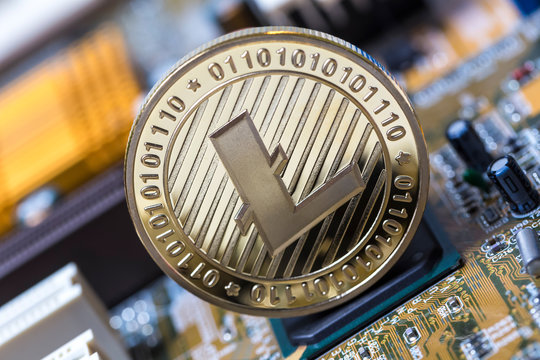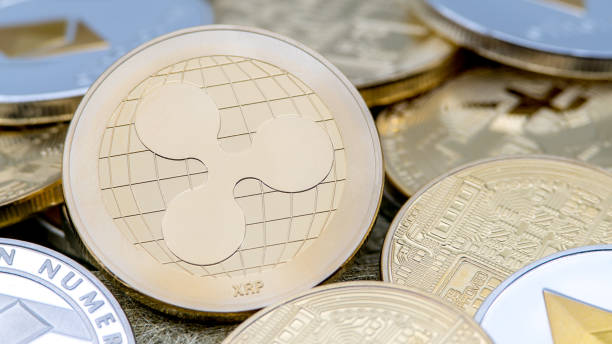Reason to trust

How Our News is Made
Strict editorial policy that focuses on accuracy, relevance, and impartiality
Ad discliamer
Morbi pretium leo et nisl aliquam mollis. Quisque arcu lorem, ultricies quis pellentesque nec, ullamcorper eu odio.
April 24th, HBTC exchange officially launched the compliant stable currency HUSD, and open 6 trading pairs simultaneously. At the same time, Bluehelix Cloud will also open HUSD related services to its 230+ exchange clients.
On the day of launch, Elsa, HBTC VP of Business Development invited Tyler, HBTC Global General Manager and Lynn, COO of HUSD to discuss further.
The AMA was held on HBTC Global Telegram
Tyler self-intro:
Hello everyone! My name is Tyler and I am currently working as HBTC Global Managing Director. I participated in the digital currency industry in 2013. I used to work for Huobi Global Group, started Huobi Global Group as an assistant to the president, and served as the general manager of Huobi Global Group. I was the first person to start Huobi Global Business. During my tenure, I started business in South Korea and Singapore from 0 to 1 and successfully explored the Vietnamese market and other localized markets. In 2018, I joined HBTC(formerly BHEX)as a Co-Founder and was responsible for global business, witnessing the development of HBTC in the past two years
Lynn self-intro:
Hello everyone! My name is Lynn and I am currently working as COO of Stable Universal, the issuer of HUSD stable coin. I first learned about bitcoin and blockchain in 2013, advising a fintech startup in the area as a VC lawyer, but not until 2017 did I join the crypto industry wholeheartedly.
First as a blockchain research analyst and then worked in both primary market investment as well as exchange operations, I gained much experience and insights in this industry. Now I am working to bring the safe and secure on-chain digital dollar-HUSD to the world.
I will be sharing my thoughts on the industry and market for stable coins, as well as HUSD. Thank you all.
Q1:
Elsa| HBTC.com: HUSD is now listed on HBTC now, can you tell us the reason? What’s your expectation?
Lynn@HUSD: Maybe the reason is, both of us start with a letter “H”, haha, that’s an interesting coincidence.
HUSD really cares about providing secure, reliable, and convenient services to our users and how to bring transparency and accountability to the blockchain industry. Meanwhile, for the several times I talked with HBTC team members like Tyler, and Elsa, I can see that HBTC team really believes in keep innovating in the blockchain industry and providing more choices to meet users’ needs.
Maybe there is some resonance in the values shown in what the HUSD team and HBTC team are doing. I am very glad that HBTC chose HUSD as one of the stablecoin products besides USDT to provide platform users and partners, more choices for users, and the industry!
We will continue to provide secure and trusted products and services to our users. I expect to see HUSD adopted in more and more places-crypto exchanges and wallets, payment services providers alike. More choices for the user is better!
Tyler| HBTC.com:Since its establishment, HBTC has always upheld the principle of security and stability of the exchange as priorities to ensure the interests of our users are protected. This is the key essence of our development. No matter under what circumstances or market conditions, HBTC has maintained a record of zero downtime and zero assets theft.
On our second anniversary, we implemented a 100% reserve system showing forth our commitment to transparency and security of the platform’s assets to ensure the safety of our user’s assets on HBTC. Find out more by clicking
https://www.hbtc.com/finance/trace_back/BTC.
Most of the currencies listed on HBTC in the past are mainly leading cryptocurrencies, such as BTC and ETH. Traders preferred trading leading cryptocurrencies than altcoins. USDT is listed as a source for liquidation for its large quantity in circulation. However, USDT has also been criticized for its opacity which makes it a risk to the business. From our communications within the team and requests from our users, we realize that providing more options for stablecoins is the right strategy.
HUSD focuses mainly on compliance, transparency, and stability which verily coincides with the development direction of HBTC. HUSD is the fourth stablecoin with compliance to circulation and forefront development as a stablecoin. Compliance and stability + user demand + development potential are the reasons for listing HUSD on HBTC.
Q2:
Elsa| HBTC.com: What is the strategic plan for coin listing and the development of stablecoin for HBTC in the future?
Tyler| HBTC.com: HBTC has a strict set of listing standards. Firstly, before we decide to list a project, our technical team will evaluate the project in terms of the technical strength of the project and the quality of the code submitted on Github.
Secondly, a good blockchain project must have a clear business direction. The project must have a real blockchain use-case and must have problem-solving capabilities. After fulfilling the two main requirements, we also take into consideration whether the project team has technical expertise in the blockchain arena.
As for the development plans for stablecoins, stability and compliance are the key considerations for listing as these improve the safety of our user’s assets which to a certain extent is due to the lack of transparency in USDT.
From our evaluation, we will use a leading stablecoin as the base currency pair for any market that provides trading with other stablecoins. Taking HUSD as an example, in the HUSD market, we have also listed USDT/HUSD, TUSD/HUSD, USDC/HUSD, and other trading pairs to meet the needs of users.
Q3:
Elsa| HBTC.com:We noticed that HBTC did a rebranding recently and that caused a spurt of new innovative token models in the crypto space. May I ask Mr. Wu to share with us the concept behind the rebranding of HBTC and the reasons for new token models?
Tyler| HBTC.com: HBTC has been in operation for two years. During the past two years, we managed to maintain the market price of BHT above the issued price with an all-time upward trend bringing gains to our BHT token holders.
In addition, our Bluehelix Cloud Exchange System served more than 230 institutional customers around the world and had a zero downtime and zero asset theft record.
Our technical capabilities far exceeded our very own market and operational capabilities, therefore, it is only logical that we accelerate our pace of development for C2C business.
Having said that, we’ve been asking ourselves what is our business strategy?. Do we want our business to be another top market player in digital currency or do we want to focus our strategy on the blockchain business?
In the end, we decided to implement the concept of blockchain to deliver the Exchange to the community and to allow token holders to take part in the business operation and to share in the growth of the business.
In order to perfect the token model of HBC (an upgraded version of BHT), we conducted rigorous economic and mathematical theories and analytics to preserve the interests of our existing users and to enable them to fully access HBC ecological system, thus, engaging everyone to contribute to and be a part of HBTC.
At the same time, we have also launched our HBTC Chain. Therefore our HBC token is incorporated into our HBTC Chain as a new token model. In addition to consensus voting and income from mining, we have also implemented two new innovations in the exchange business:
A. Brand New 10x Repurchase (PE) Model
HBTC will use 100% of its business income in the brand new 10x PE repurchase scheme. HBTC will conduct a daily repurchase of HBC from the secondary market on it’s Exchange using the formula (10x PE = HBC price / annualized income of HBC * 10). This will create support for HBC and a solution to the drawbacks of buyback-and-burn which has no effect on increasing the price of token while the business is growing. This can effectively promote HBC on the secondary market and with the growth of the exchange business, the value of HBC will rise.
B. Brand New HBTC Captain Incentive Model
HBTC will use 50% of the HBC tokens obtained from the daily repurchase scheme to reward HBTC Captains for their contribution to the growth of the exchange. Any user who holds 1000 HBC can apply to become a HBTC Captain. The role of an “HBTC Captain” is that of value-sharing with platform co-builders of HBTC Exchange. HBTC Captains use their influential capabilities and expertise to help expand and maintain the HBTC community and to drive trading business and project listings for HBTC Exchange. HBTC Exchange will share its growth in revenue with our Captains through the brand new 10x Repurchase (PE) model.
Q4:
Elsa| HBTC.com Please tell us what Stablecoins are, and why people even want to hold a coin that ensures price stability? You know we love coins “to da moon”.
Lynn@HUSD:From an academic perspective, stablecoin is a form of cryptocurrency that is pegged to another asset, generally a fiat asset (e.g. US Dollar), a commodity (e.g. Gold or Oil), or even a basket of assets. The rise and adoption of stable coin mainly stemmed from one of the biggest barriers keeping the general population from entering the cryptocurrency market: Volatility.
One of the major narratives in the industry is that a cryptocurrency is a form of programmable money. Well, money serves three major functions: a medium of exchange, a store of value, and a unit of account. Volatility is good for trading, and at times, if you pick the right side, also good for holders who treat cryptocurrency as a store of value. However, volatility is no friend for people who wants to use cryptocurrency as a medium of exchange or a unit of account: in the flash crash on March 12, 2020, Bitcoin dropped over $1500 in an hour.
As such, native blockchain assets such as Bitcoin and Ethereum fails to serve two of the three major functions of money: serving as a medium of exchange, or a unit of account.
There goes the product-market fit of stablecoins. With low volatility and the programmable feature blockchain brings, stablecoin can serve well as a medium of exchange or a unit value in the cryptocurrency world, adopted firstly as counter currency and basic trading instrument in major crypto exchanges, and now finding more application scenarios.
Currently, the most common types of stablecoin on the market are fiat-backed stablecoins, like HUSD. The U.S. dollars backing each HUSD in circulation are held in custody by a regulated U.S. trust company. The funds are then attested by an independent auditing firm on a monthly basis to verify the 1:1 peg and provide a high level of transparency for HUSD holders.
HUSD was launched as part of an initiative to increase transparency, security, and stability to the market for cryptocurrencies. Designed to offer users a gateway to reduce volatility when participating in the cryptocurrency market, as well as a convenient and secure platform for easy HUSD to USD redemption, we issued the HUSD token on Ethereum blockchain, as an ERC20 token.
Q5:
Elsa| HBTC.com: OK now we know why we need a stablecoin. But as our users are asking, why we choose HUSD? Questions from our community, how is HUSD different from USDT?To be honest, it seems USDT is more popular for most of us now. And how HUSD solve the transparency problem of stablecoin? Please share with us.
Lynn@HUSD:As I just explained, the volatility of native blockchain assets makes it hard for the user to adopt them in real life, like that famous story of a programmer purchasing 2 large pizzas for 10,000 bitcoins in 2010.
So, the market needs a middle ground between technology and stability — a safe haven for traders, of sorts. That solution is stablecoin. It leverages both blockchain technology and stable architecture to provide the cryptocurrency market assets with stabilized values for trading and payment.
As the first generation of USD-backed stablecoin, USDT has its strengths and flaws. It reached wide-spread liquidity-mainly in Asia-earlier than every other USD-backed stablecoin, and that’s why most people know about it and use it.
However, USDT’s USD pegging is not guaranteed by anyone except 1) The belief in Bitfinex and Tether, and 2) The high liquidity from the market and price spread can be mitigated by arbitrage traders.
And we have seen that beliefs are collapsing, not so long ago:
In October 2018, Tether experienced crash amidst banking issues right after following the debut of a series of competing for stable coins. At the time, the spread of the USDT/USD trading pair reached -15%. That was really high volatility for a “stable coin”. I still remember these days even Bitcoin prices spiked, because of the price drop of USDT.
That was also when market participants start to realize the risk of relying on one single stablecoin, because as a first-generation product, USDT suffers from the risk of lack of transparency, auditability, and compliance.
HUSD is just the opposite of this, the goal is to improve upon those limitations. To ensure that each HUSD token is backed 1:1 by the U.S. dollar, all of the fiat assets HUSD received are held in a U.S. regulated trust company. The HUSD team does not and cannot touch the client’s money. And we also have an independent audit firm to provide monthly attestations to bring transparency and trust in the area. These attestations are available for public viewing on www.stcoins.com.
Q6:
Elsa| HBTC.com OK, we see the market change in the past few months, the transactions based on stablecoins are rising. And the market cap of stablecoins was jumping since March. And a question from our community is: What’re the applications of HUSD, can we use HUSD in the real world?
Lynn@HUSD:According to the data from Coin Metrics, HUSD’s market cap rose by 80.18% in March, similarly, USDC grew 55.4%,USDT(Erc-20) grew 55.91%,PAX grew 24.74%. The top five ERC-20TH stablecoins total supply increased by 57% to 5.5 billion within one month. So yes, the market does see a growing trend for stablecoins.
Thanks to the hard work of the whole HUSD team, HUSD has exceeded the All-time-high market cap of over $150 million, and the total issuance has exceeded $1 billion in less than 10 months. We have increasingly received great feedback from our users’ trust and we truly appreciate the amount of support and trust we get in the industry from both our users and the industry in general thus far. As such, we will continue to provide a safe and secure stablecoin product and service to the world.
Currently, crypto trading is still the primary use case of stablecoin. Users can use HUSD as a counter currency in trading pairs on CeFi exchanges such as HBTC, Huobi Global, Ftx, Hotbit, Huobi Indonesia etc, as well as dexs such as Tokenlon. We’ve seen lots of user activity on pairs such as USDT/HUSD and BTC/HUSD, and volumes on other trading pairs are picking up as the awareness of secure dollar-backed stablecoins is rising quickly in the industry this year.
We also look into adoption cases in wider scenarios such as payment and availability on DeFi applications:
Alchemy Pay now supports users in Singapore, Hong Kong S.A.R., Japan, and Dubai to make payments in supermarkets, shopping malls, and car rental firms with HUSD. And Tokenlon DEX has supported users to swap between other crypto-assets with competitive rates and speed. We are building out the HUSD ecosystem for our users, step by step. And of course, it is our pleasure if the HBTC Chain community is interested in considering involving HUSD as part of the its DeFi system, We are always open to new possibilities!
Although crypto trading and scenarios in crypto industry usage platforms are are still currently the main stage for stablecoins, we are thinking of the box on what stablecoins can do in the future. We see the stablecoins have the ability to connect, empower, and affect the real economy. We are trying actively building to build our products and services so that enterprises and people individuals from all industries (including traditional industries) can easily use and access our services everywhere.
Q7:
Elsa|HBTC.com We know CBDCs are quite hot globally, and China is one of the countries that lead this trend. Do you think the crypto stablecoins have interest conflict with CBDCs like DCEP?
Tyler| HBTC.com:China has piloted its central bank’s digital currency and demonstrated the real value brought on by blockchain technology. China aims to replace the currency M0 with the central bank’s digital currency.
The pilot project by the central bank on the digital currency has even sparked a race between the global central bank’s on digital currency research. From March till now, we have seen the United States Congress continuously proposing bills for the development of the digital currency.
The globalization of digital currencies has proven the feasibility of blockchain technology. Furthermore, it has brought evolution to the world of currencies; starting from the barter system to gold and silver bars, metal coins, paper currency to electronic currency, and now digital currency.
The acceptance by central banks of digital currencies delivers a real-world application to blockchain technology. In comparison, crypto space only stands a small portion of the entire blockchain.
Therefore, the pilot program and issuance of the central bank’s digital currency will not affect the blockchain industry. Of course, with the growth of the digital economy, blockchain applications, and the emergence of encrypted assets are bound to attract new blood to the industry to study or to own encrypted assets.
Lynn@HUSD:The discussion of Central Bank Digital Currency (CBDC) is very meaningful and impactful for the whole industry.
Let’s do a short review of money supply mechanism at first:
The money supply is the total value of money available in an economy at a point in time.
Various types of money in the money supply are generally classified as Ms, such as M0, M1, M2, and M3, according to the type and size of the account in which the instrument is kept. The money supply reflects the different types of liquidity each type of money has in the economy. It is broken up into different categories of liquidity or dependability.
M0 and M1 are the most widely used money supply categories:
M0 or the monetary base: “narrow money”, the sum of currency in circulation and reserve balances (deposits held by banks and other depository institutions in their accounts at the Central Bank (e.g. Federal Reserve)).
M1: The sum of currency held by the public and transaction deposits at depository institutions (which are financial institutions that obtain their funds mainly through deposits from the public, such as commercial banks, savings and loan associations, savings banks, and credit unions).
So in plain words, we can simplify the above definition as M0= central bank money; M1= central bank+commercial bank money (partially).
Now let’s go back to DC/EP under this framework:
From what has been made publicly available, DC/EP is a proposed digital legal tender centrally issued by the People’s Bank of China (PBoC), backed 1:1 by RMB reserves, with manageable anonymity and encryption features. A two-tier model is applied in DC/EP, so PBoC will not directly issue DC/EP to the public, the commercial banks will be involved between them.
If this is how DC/EP works in the future, then it is clear that DC/EP is a form of M0 money, i.e. the central bank money. It makes a lot of sense for the central bank to adopt a digital method to issue M0 rather than traditional ways: it is more efficient, more trackable, and more transparent.
CBDC discussion and adoption, as well as privately issued stablecoins, are signs that the whole world economy is turning more digital; the more real-world economy will have some aspects of them operated on-chain- no matter whether it is on a public chain or a permissioned chain. We’ll see blockchain and programmable assets become more of the infrastructures for the new era, to increase transparency, efficiency, as well as the accessibility of financial and monetary services to the world.
Q8:
Elsa| HBTC.com: As a stablecoin issued in a centralized mechanism, what’s your opinion on DeFi? Our community members want to know, will HUSD ecosystem integrate with DeFi? And what’s your opinion on the programmable business ecosystem in future?
Lynn@HUSD:Decentralization is a means to an end, not the end itself.
Decentralization is a means to an end, not the end itself.
There are several aspects of decentralization: architectural decentralization, governance decentralization and logical decentralization.
Public blockchains reach governance decentralization and architectural decentralization.
Designing a project on public blockchain reserves the architectural decentralization, but whether it is decentralized in governance depends on what the project needs.
Actually, currently, hybrid decentralization may be the answer to many projects: decentralize to some degree like at the protocol level, yet centralized in other aspects like governance or operations. This way, the project obtains effects of decentralization such as fault tolerance and transparency, while at the same time reserve benefits of centralized governance/operation such as efficiency and -some times, security. Like what we have seen in this week’s events: Maybe code is the law, but Blockchain still needs a legal system.
Stablecoin is one of those projects, it is more like “hybrid decentralization” than “centralized”. Our users can trust both the blockchain HUSD operates on as well as the regulation mechanism guaranteeing its value.
In terms of DeFi, “Fi” is the part I care most about. I.E., whether by decentralizing certain aspects of the project, the service/product provided becomes a better Finance service/product to targeted users. Decentralized and hybrid decentralized assets can both serve as important components of Defi projects: Dai accepting stable coins like USDC is a great example that “hybrid decentralized stable coins” as well as completely decentralized crypto-assets can work together in decentralized finance systems. HUSD will also love to play an important role as a stable, secure, and convenient medium of exchange in Defi scenarios.
To sum up: a project shall not decentralize for the matter of decentralization only: we need to answer a question: what we are achieving for decentralization? What value we are providing to the users by being decentralized? When the cost of decentralization overcomes the benefit of decentralization, it is not sustainable to completely decentralize.
Tyler| HBTC.com:Our current financial system operates on CeFi Centralized Finance where you entrust a third-party intermediary to manage your wealth such as in banking, in stock exchanges, and in various other financial institutions. DeFi Decentralized Finance is a financial system that uses the concept of blockchain to set up exchanges and to provide loans having decentralized aspects. DeFi naturally has the attributes of decentralization without the need for trustworthiness in providing the financial system with transparency, fairness and protection from any possibilities of market manipulation.
Taking HBTC Chain as an example, the HBTC Mainnet was launched on our 2nd anniversary together with the release of two major functions “Decentralized Flash Exchange” and “Cross-chain Asset Mapping”.
“Decentralized Flash Exchange” has the characteristics of an absolute decentralization without the need for KYC and security of assets. Taking BTC/ETH flash exchange as an example, no party has access to the private keys of BTC and ETH during the entire process of flash exchange. The transaction on the flash exchange can be reconfigured to invalid when the transaction is not completed within the given time frame. Code is Law, which can solve centralized financial transactions in many situations through a trustless environment.
Businesses are more likely to want to avoid any unnecessary disputes that may arise and will, therefore, switch to smart contracts programming. For example, if we need to sign a business contract, we only need to program a smart contract that meets our specifications. A smart contract is tamper-proof and is immutable, providing assurance and security to businesses.
Although DeFi Decentralized Finance is the right concept for businesses building and constructing the entire ecosystem will take years due to technical constraints. This requires everyone to contribute his/her part in building the complete ecosystem.
Just to share, the launch of HBTC Mainnet will deliver cross-chain asset custody interoperability between leading currencies like BTC and ETH with altcoins. This will improve the ecological experience of the users, in decentralized mortgage lending and DEX applications.
Q9:
Elsa| HBTC.com: We are facing the COVID-19, global macroeconomic turbulence, and we also see the revolution of technology like blockchain. The greatest truths are the simplest, can you please sum up your idea about these issues in a single sentence?
Tyler| HBTC.com:With everyone’s efforts, we hope to put an end to the covid19 pandemic very soon. We also hope that blockchain technology could play a role in tracking the behaviors and statistics data such as quarantine records and analysis to speed up the global economic recovery pace.
Lynn@HUSD: What cannot kill you will only make you stronger: that’s what COVID-19 will do for the whole world: it makes us appreciate more about what we have, dig deeper on real innovations like blockchain technology, and marks the paradigm shift of next 10 years, both in world history and blockchain industry. As early adopters of this industry, I am very optimistic that we are all well prepared for that.
To learn more about Bluehelix and HBTC.com, please follow us on social media.
?HBTC Official Telegram
?Telegram Announcement Channel
?Twitter
?Facebook



























